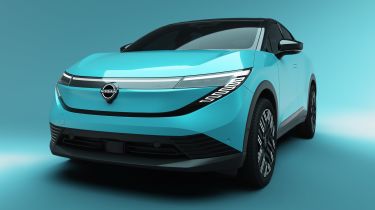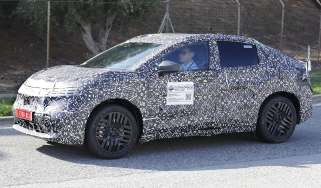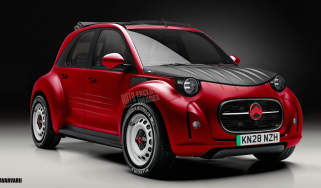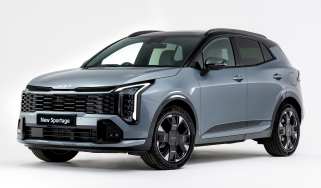New 2025 Nissan Leaf: best look yet at EV pioneer in fresh SUV form
A lot has changed with the all-electric Nissan Leaf, but the new model will still be built in the UK
The all-new, third-generation Nissan Leaf will be revealed in full later this month, a few months after the Japanese brand shared the first official images of the next iteration of what was the world’s first mass-market EV.
The original Leaf arrived in the UK in 2011, and in the years since, more than 700,000 examples have been sold globally. It’s also become one of Nissan’s “core 'heartbeat' models”, according to global product strategy boss, Richard Candler, who says learnings from the two previous generations have influenced the upcoming third iteration.
Speaking in a video about the evolution of the Leaf, Candler also said Nissan wanted to balance “emotional and rational appeal” with the new model, “ensuring the car looks sleek and bold, while meeting the real-world needs of families”. For its third outing, the Leaf has been transformed from a family hatchback into a high-riding crossover SUV, which is more popular nowadays.
As well as catching customers’ eyes, the sleek, coupe-esque design has also helped make the new Leaf Nissan’s most aerodynamically efficient car to date, with a drag coefficient of just 0.25Cd, compared with the previous model’s 0.28Cd. However, the brand is keen to point out that the swooping shape doesn’t come at the expense of practicality.
New Nissan Leaf design
The latest Leaf is certainly a departure from the last couple. Its styling is inspired by the Nissan Chill-Out concept presented back in 2021, with the new Leaf carrying over several key elements, such as its unique interpretation of the brand’s signature ‘boomerang’ lights, and the distinctive wheel design, albeit an inch or two smaller than on the show car.
Both of those were also included in our exclusive – and as we can now see, incredibly accurate – images of the new Nissan Leaf that we published last year.
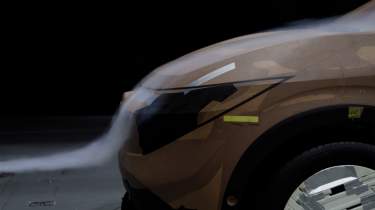
Other details include a rather sharply pointed nose featuring a full-width lightbar and an illuminated Nissan badge. There are also flush-fitting handles on the front doors, with the rear door handles hidden high up on the C-pillar to give a coupe-like look, while the charging port is located on the front left wing.
Meanwhile, to help the Leaf cut through the air, there are flush door handles, an active grille shutter on the front, aero-optimised wheel designs and a flat underfloor, while the rear liftback design helps generate downforce. Even the use of an electrochromic glass roof, rather than a conventional sunroof with a mechanical blind, allowed the design trim to lower the car’s height by 12mm.
As we mentioned, Nissan promises the new Leaf will be a spacious family-friendly crossover. This suggests to us that rivals will include other stylish, but less swoopy, small SUVs such as the recently launched Skoda Elroq and Kia EV3. The Volvo EX30 and Smart #1 are also potential competitors.
Thus far, we’ve yet to see inside the car to gauge how much space there is on offer. But we expect the new Leaf to feature the brand’s new-generation cabin design, sharing lots of elements with the larger Nissan Ariya – the 2022 Auto Express Car of the Year.
The set-up will likely include the dual-screen layout and clever integration of some of the physical controls into various trim and material elements, as with the Ariya’s faux-woodgrain control panel, plus the new Google-powered infotainment system that now comes in the big-selling Nissan Qashqai.
Platform, range and charging speeds
Technical details are still a little thin on the ground. However, Nissan has confirmed the Leaf’s powertrain will include its new three-in-one electric drive unit, and the car will sit on the same CMF-EV platform as the Ariya, as well as the Renault Megane E-Tech and Scenic E-Tech.
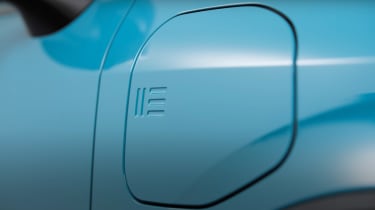
It’s possible the Leaf will be offered with the same 63kWh and 87kWh battery packs as its bigger brother too. If so, we would expect entry-level models to offer somewhere between 280 and 300 miles of range, while long-range versions could cover more than 350 miles on a single charge. Hopefully we’ll learn the official figures soon.
The Ariya and mechanically related Megane both have a 130kW maximum charging speed, and we expect the new Leaf will do, too. That’s not exceptional by today’s standards, but it’s still good enough that a 20 to 80 per cent top-up should only take around half an hour.
However, while much has changed about the Nissan Leaf, we’re pleased to report that it will continue to be manufactured in Nissan’s Sunderland plant. The same facility will also be responsible for producing the next-generation Nissan Juke arriving in 2026, and the all-electric Qashqai that we know is on the way.
Nissan Leaf through the generations
The Nissan Leaf has gone from ground-breaking EV to EV SUV in three generations. Here's how...
Nissan Leaf Mk1

- On sale: 2011 to 2017
As the world’s first mass-market EV, the original Nissan Leaf was a true pioneer within the modern motoring world and paved the way for today’s diverse range of sensible, electric family cars. The first examples were built in Japan, each powered by a 24kWh battery that delivered a range of just 109 miles. Nissan’s Sunderland plant began producing the Leaf in 2013, and a few years later, a larger 30kWh battery became available that could do 155 miles on a charge. More than half a million Mk1 Leafs were sold by the time the Mk2 was ready to launch.
Nissan Leaf Mk2

- On sale: 2018 to 2024
Unlike its predecessor, the second-generation Leaf faced competition from the jump. By 2018, Volkswagen, Kia, Renault and other brands had jumped on the bandwagon and launched their own electric cars. In response, big advancements for the Mk2 included an official range of up to 239 miles for the ‘Leaf e+’, plus the introduction of an ‘e-Pedal’ function, otherwise known as one-pedal driving, which was a game-changing feature when driving the car in town.
Can't wait for a new Nissan Leaf? Check out the best deals on used cars available now...
Find a car with the experts
